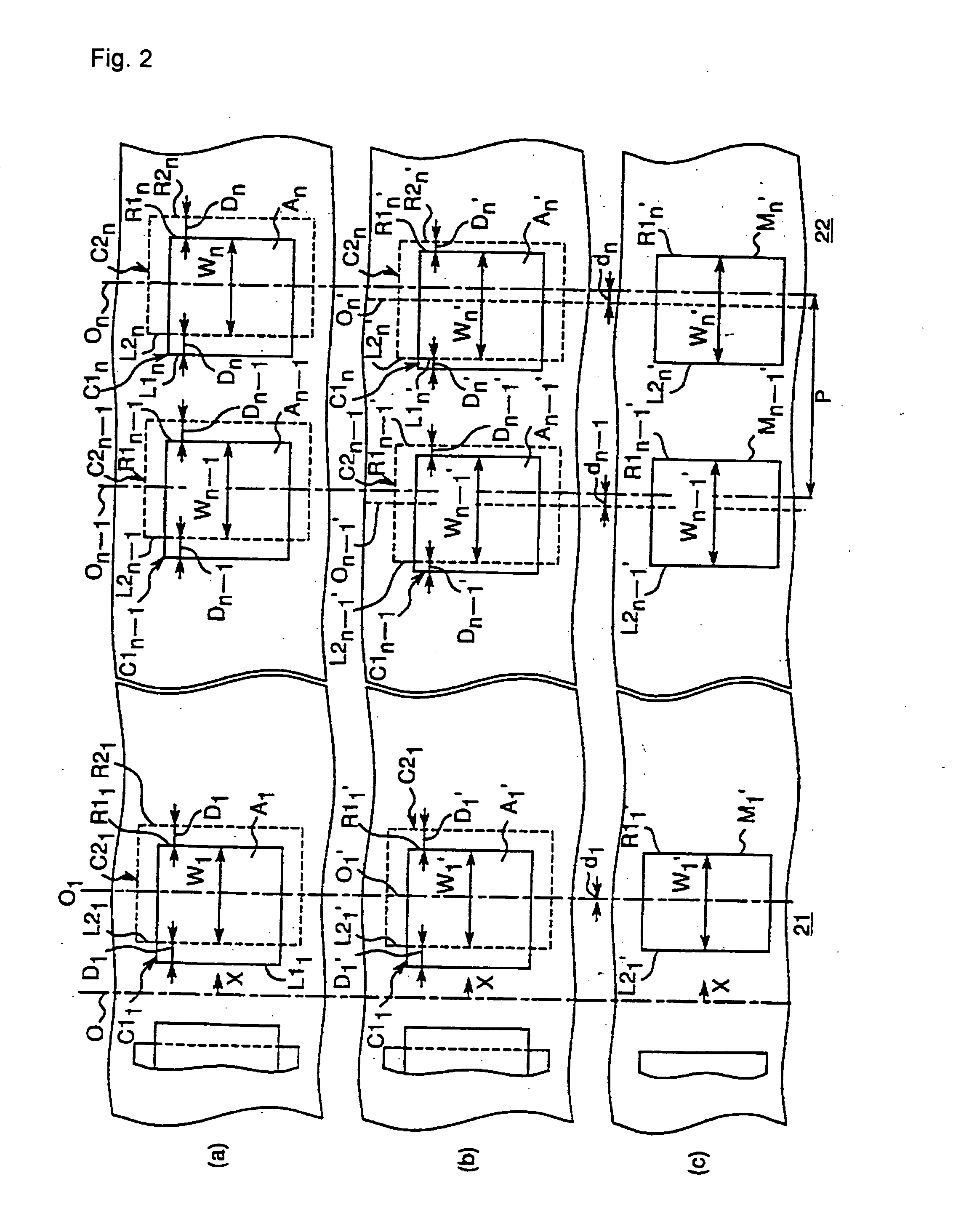Solid-state camera device and method of manufacturing the same, and method of making mask for manufacturing the device
a camera device and solid-state technology, applied in the field of solid-state camera devices and methods of manufacturing the same, and the method of making masks for manufacturing the devices, can solve the problem that the shading correction technique of the light-scaling technique cannot be sufficiently corrected
- Summary
- Abstract
- Description
- Claims
- Application Information
AI Technical Summary
Problems solved by technology
Method used
Image
Examples
example 1
FIG. 2 explains an example in which the method of manufacturing a mask according to the present invention is applied in the lateral direction (X-direction). Specifically, FIGS. 2(a), (b) and (c) illustrate one line of a pattern (mask patterning data) in the lateral direction from the middle of the camera region 21 to the peripheral camera region 22 (right end), respectively, wherein the X-coordinate of the center of the camera region O is defined to be 0. Additionally, the left part of the pattern is not illustrated in the figure because the mask pattern is symmetrical.
Step 1
First, the first mask patterning data and the second mask patterning data are prepared at respective minimum size units as usual (e.g., 0.01 μm) to define, in the first data, a plurality of rectangular regions, C11, . . . , C1n−1, C1n (represented by solid lines; hereinafter, referred to as “first rectangular region”) aligning in a line at a constant interval P in the lateral direction and, in the second dat...
example 2
Next, FIGS. 3 through 5 explain another example in which the method of manufacturing a mask according to the present invention is applied both in the lateral direction (X-direction) and in the longitudinal direction (Y-direction). More particularly, FIGS. 3 through 5 illustrate a pattern (mask patterning data) of a one-fourth part of the whole camera region including the middle of the camera region 21 and the peripheral camera region 22 (right end, upper end), wherein the X- and Y-coordinates of the center of the camera region O is defined to be (0, 0). Additionally, a pattern of the remaining three-fourth part is omitted because the mask pattern is symmetrical.
Step 1
First, the first mask patterning data and the second mask patterning data are prepared at respective minimum size units as usual (e.g., 0.01 μm) to define, in the first data, a plurality of rectangular regions, C111, . . . , C1n(n−1), C1nn (represented by solid lines; hereinafter, referred to as “first rectangular ...
PUM
 Login to View More
Login to View More Abstract
Description
Claims
Application Information
 Login to View More
Login to View More - R&D
- Intellectual Property
- Life Sciences
- Materials
- Tech Scout
- Unparalleled Data Quality
- Higher Quality Content
- 60% Fewer Hallucinations
Browse by: Latest US Patents, China's latest patents, Technical Efficacy Thesaurus, Application Domain, Technology Topic, Popular Technical Reports.
© 2025 PatSnap. All rights reserved.Legal|Privacy policy|Modern Slavery Act Transparency Statement|Sitemap|About US| Contact US: help@patsnap.com



